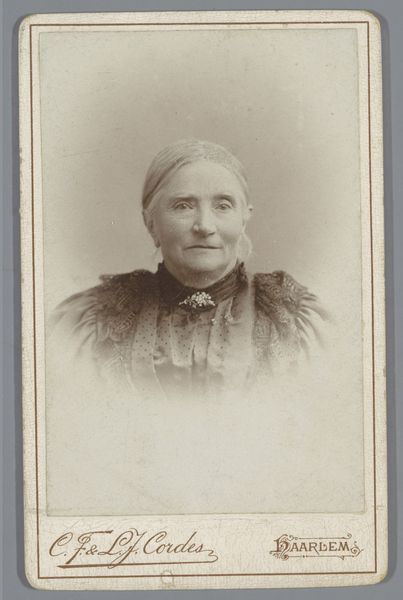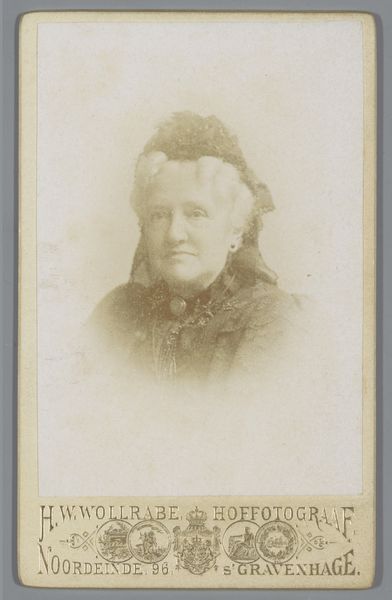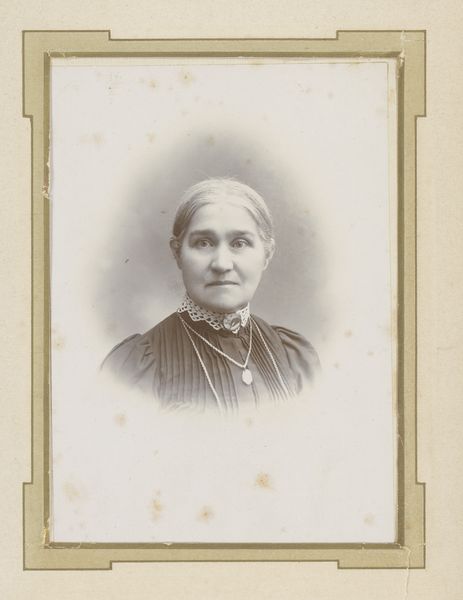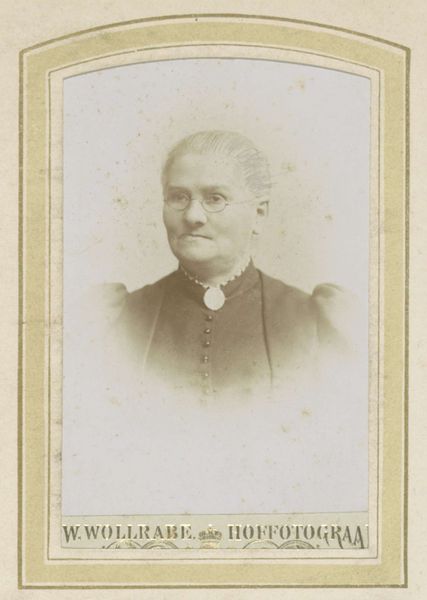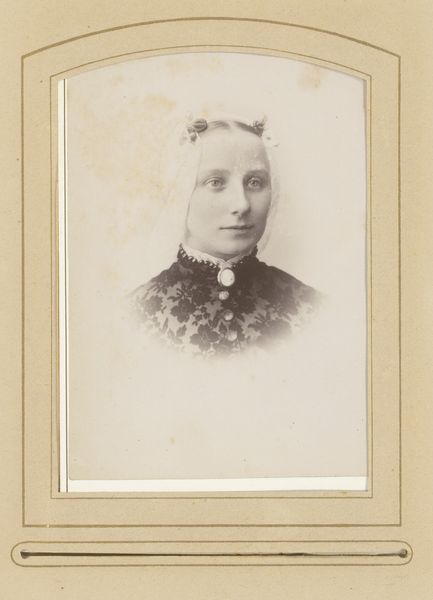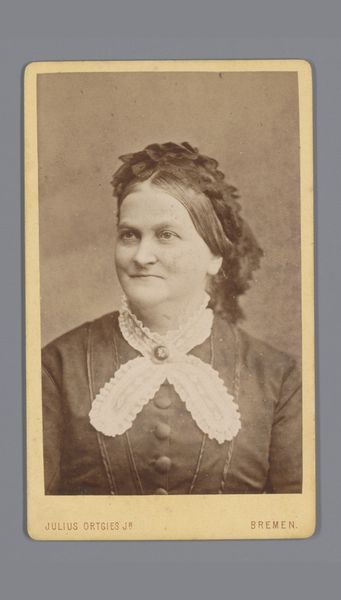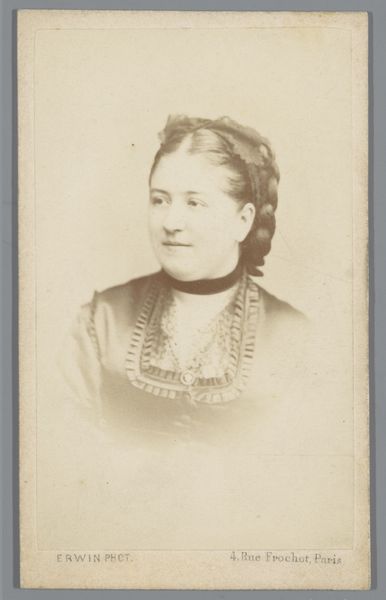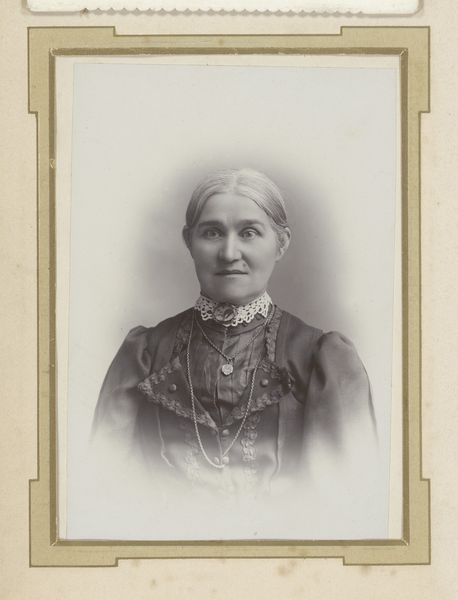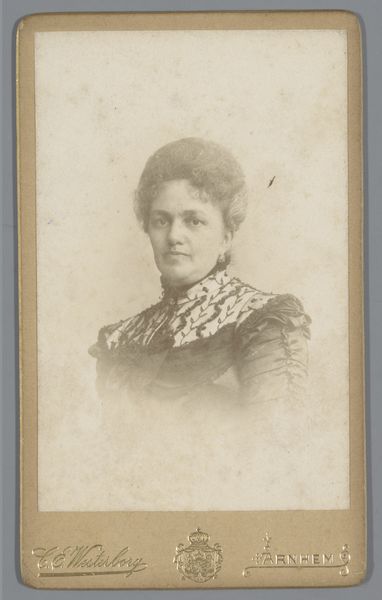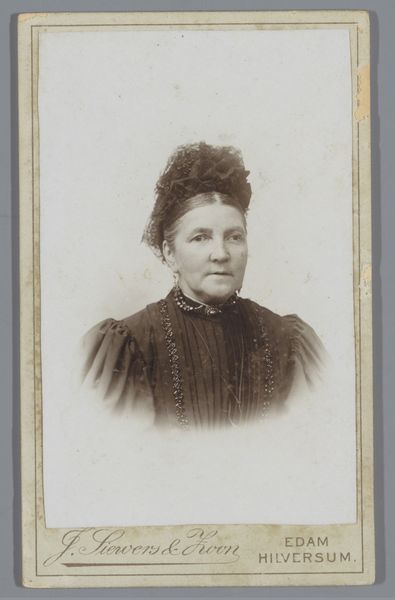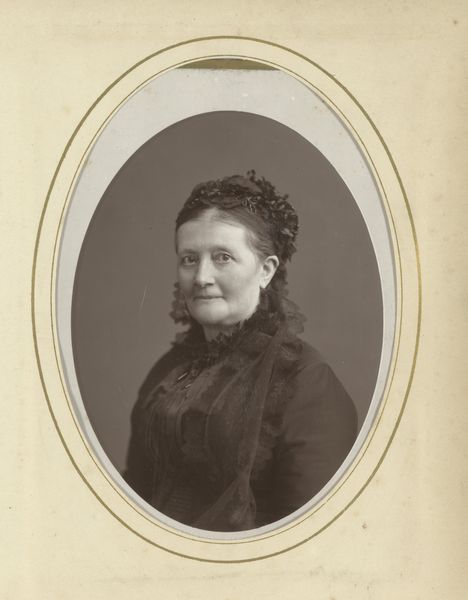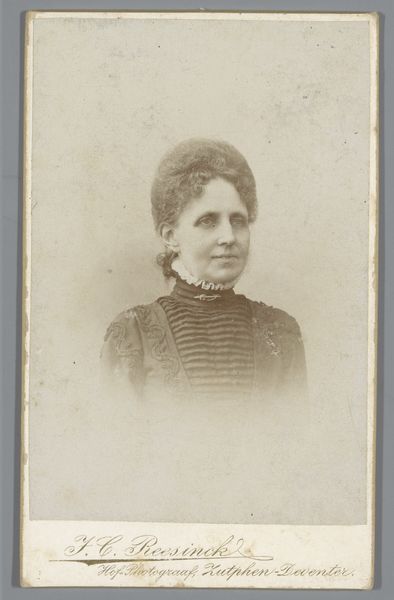
photography, gelatin-silver-print
#
archive photography
#
photography
#
historical photography
#
gelatin-silver-print
#
realism
Dimensions: height 138 mm, width 98 mm
Copyright: Rijks Museum: Open Domain
Curator: This gelatin silver print, taken sometime between 1880 and 1910 by Adolf Neumann, is simply titled "Portret van een oude vrouw," or "Portrait of an old woman." Editor: There's such starkness to it. The way the light hits her face—it emphasizes every line, every year etched into her skin. And that dark, elaborate dress only makes her pallor more prominent. Curator: Photographic portraiture was becoming increasingly accessible at this time, expanding beyond the bourgeoisie. What's interesting here is considering how someone like Neumann may have navigated these social shifts in the act of image-making itself. Editor: Exactly. You see the fine lace at her neck and the details in what seems to be velvet. These items suggest craft, skill, and a level of domestic labor now mostly invisible. I wonder about the fabric’s tactile quality and its role within the household. Curator: These formal portraits reinforced specific ideals. Think about how this image would have circulated—within family, perhaps the community—asserting her respectability and position within a clear social structure. Editor: That's clear in how controlled and formal the shot is, a direct and rather uncompromising gaze. I also find myself pondering the physical process: the setting of the studio, the chemical processes involved, and Neumann's expertise required for such a durable image. Curator: The image and its reproducibility ensured a certain kind of legacy, reinforcing the patriarchal system of inheritance and societal expectations. It speaks to a defined and constructed femininity, wouldn’t you say? Editor: I'd agree that it's presenting us with constructed roles. Yet, there's a remarkable resilience in the subject's eyes, even as the technologies and cultural forces were trying to dictate her image. The weight of materiality, craft, and class – you can see it all, but ultimately it’s her experience that lingers. Curator: It certainly pushes one to think about how photography functions within our notions of legacy and societal constructs. Editor: Absolutely. It reminds us that even in portraiture, labor and class persist, woven into the very fabric of the image.
Comments
No comments
Be the first to comment and join the conversation on the ultimate creative platform.
